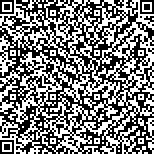石芝喜,黄凯荣,刘明检.步行矫形器对腰2节段A-B级脊髓损伤患者步行能力的影响[J].中华物理医学与康复杂志,2021,43(6):504-507
扫码阅读全文

|
| 步行矫形器对腰2节段A-B级脊髓损伤患者步行能力的影响 |
|
| |
| DOI:10.3760/cma.j.issn.0254-1424.2021.06.005 |
| 中文关键词: 脊髓损伤 步行矫形器 膝踝足矫形器 截瘫步行矫形器 |
| 英文关键词: Walking Knee-ankle-foot orthoses Spinal cord injury at L2 Walking orthoses |
| 基金项目: |
|
| 摘要点击次数: 5185 |
| 全文下载次数: 6015 |
| 中文摘要: |
| 目的 观察穿戴膝踝足矫形器(KAFO)和截瘫步行矫形器(WO)对腰2节段A-B级脊髓损伤步行能力及生理消耗指数(PCI)的影响。 方法 纳入30例腰2节段A-B级脊髓损伤患者,年龄20~45岁,根据患者穿戴的步行矫形器不同,按随机数字表法分为KAFO组(穿戴KAFO)和WO组(穿戴WO),每组15例,2组患者均行常规康复治疗,包括肌肉力量训练、关节活动度维持训练、站立床训练、平衡训练、坐位下重心转移训练、日常生活活动训练以及电疗和针灸等。在穿戴步行矫形器后,KAFO组及WO组患者穿戴相应的步行矫形器进行步行训练,每日训练60 min,每周6 d,共12周;并对比2组患者穿戴不同步行矫形器第2周和第12周后的步长、步速、步频、10 m步行时间、6 min步行距离及PCI。 结果 经常规康复治疗后,KAFO组和WO组患者在穿戴不同步行矫形器步行训练第12周后的步长[(43.45±12.33)和(46.21±11.45)cm]、步速[(44.74±10.32)和(50.18±9.56)cm/s]、步频[(45.29±14.11)和(48.14±15.32)步/min]、10 m步行时间[(20.89±19.22)和(17.33±18.26)s]、6 min步行距离[(391.12±100.89)和(480.56±108.12)m]及PCI[(0.89±0.86)和(0.50±0.53)次/m]较训练第2周后的步长[(40.12±15.11)和(45.65±13.12)cm]、步速[(36.74±11.29)和(39.12±12.35)cm/s]、步频[(42.34±14.23)和(44.58±13.87)步/min]、10 m步行时间[(27.14±18.15)和(25.02±17.19)s]、6 min步行距离[(350.15±110.23)和(430.10±99.23)m]、PCI[(1.67±0.72)和(0.91±0.81)次/m]均有明显改善。组内比较,除WO组的步长差异无统计学意义(P>0.05)外, 2组患者的上述各项观察指标组内差异均有统计学意义(P<0.05);而且2组患者在穿戴步行矫形器的同时间点上述各项观察指标组间比较,差异均有统计学意义(P<0.05)。 结论 KAFO和WO两种步行矫形器对腰2节段A-B级脊髓损伤的步行参数、步行能力及PCI均有明显改善作用,且WO较KAFO更具有优势。 |
| 英文摘要: |
| Objective To compare the effect of a knee-ankle-foot orthosis (KAFO) and a paraplegic walking orthosis (WO) on the walking ability and the physiological cost index (PCI) of persons suffering from AIS A-B spinal cord injury (SCI) at the L2 level. Methods Thirty subjects with AIS A-B SCI at L2, aged 20 to 45, were assigned randomly into a KAFO group (n=15) or a WO group (n=15). All received muscle strength, range of motion, standing, balance and weight shifting training and training in the activities of daily life. Electrotherapy and acupuncture were also administered. Both groups underwent 60 minutes of walking training 6 times per week for 12 weeks, wearing either a KAFO or a WO. Step length, gait speed, step frequency, 10-metre walk time, 6-minute walk distance and PCI were compared after 2 and 12 weeks. Results The average step length, gait speed, step frequency, 10-metre walk time, 6-minute walk distance and PCI of both groups had improved significantly between the 2-week and 12-week evaluations, with significantly greater average improvement among the WO group at both time points. Conclusion A WO or KAFO facilitates better walking after an AIS A-B spinal cord injury at L2. Wearing a WO is more effective than wearing a KAFO, on average. |
|
查看全文
查看/发表评论 下载PDF阅读器 |
| 关闭 |
|
|
|